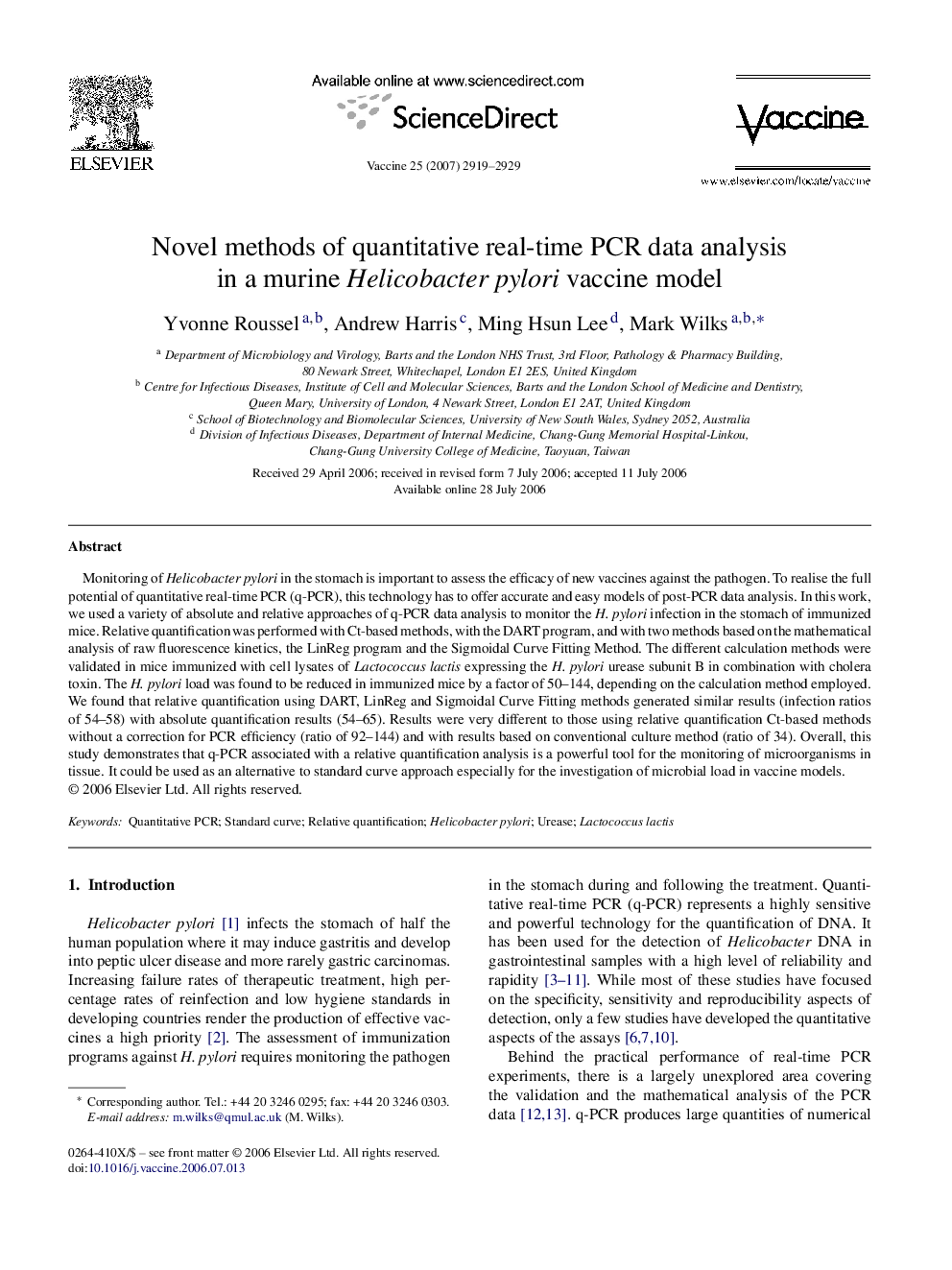| Article ID | Journal | Published Year | Pages | File Type |
|---|---|---|---|---|
| 2408424 | Vaccine | 2007 | 11 Pages |
Monitoring of Helicobacter pylori in the stomach is important to assess the efficacy of new vaccines against the pathogen. To realise the full potential of quantitative real-time PCR (q-PCR), this technology has to offer accurate and easy models of post-PCR data analysis. In this work, we used a variety of absolute and relative approaches of q-PCR data analysis to monitor the H. pylori infection in the stomach of immunized mice. Relative quantification was performed with Ct-based methods, with the DART program, and with two methods based on the mathematical analysis of raw fluorescence kinetics, the LinReg program and the Sigmoidal Curve Fitting Method. The different calculation methods were validated in mice immunized with cell lysates of Lactococcus lactis expressing the H. pylori urease subunit B in combination with cholera toxin. The H. pylori load was found to be reduced in immunized mice by a factor of 50–144, depending on the calculation method employed. We found that relative quantification using DART, LinReg and Sigmoidal Curve Fitting methods generated similar results (infection ratios of 54–58) with absolute quantification results (54–65). Results were very different to those using relative quantification Ct-based methods without a correction for PCR efficiency (ratio of 92–144) and with results based on conventional culture method (ratio of 34). Overall, this study demonstrates that q-PCR associated with a relative quantification analysis is a powerful tool for the monitoring of microorganisms in tissue. It could be used as an alternative to standard curve approach especially for the investigation of microbial load in vaccine models.
